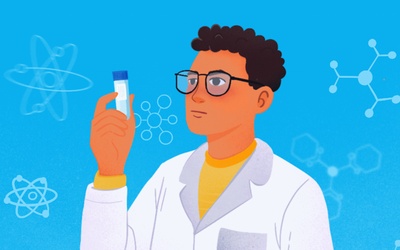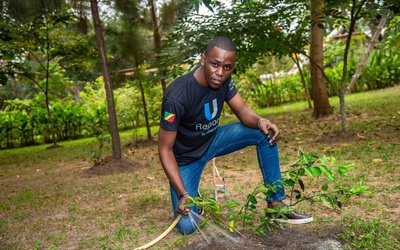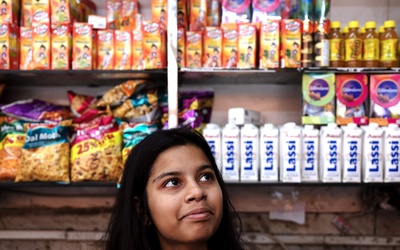Let's start this blog with some questions:
If in a community water is scarce, who is forced to travel long distances in unsafe conditions to reach water and bring it home? If a drought or flood occurs, who is most common to miss school? In other words, when a climate crisis hits, who is the most affected?
The answer is girls and young women.
Around the world, it is known that girls and young women are the first to leave school to support their families and take on extra domestic chores created by new climate conditions. As another worrying fact, 4 out of 5 people displaced by climate change are girls and women. Shocking, right? However, that is not enough; despite being disproportionately affected by climate change, their voices are not adequately represented in climate discussions, resulting in policies that do not address their specific needs.
But, what can we do to include girls and young women in climate discussions? Well, how if we start by asking about their views and experiences on climate change and listen to what they say?
To include girls’ and young women’ voices in the climate discussion and policies, the World Association of Girl Guides and Girl Scouts (WAGGGS), through the "Her World, Her Voice" programme, and UNICEF launched a global consultation on Climate Change in early 2022.
Developed as a girl-led effort, the poll was co-designed by a team of young women and under a participatory process where over 80 girls from 13 countries voted on the questions they believed were the most important to address. The global poll took place online, through U-Report, and offline through in-person activities led by Climate Poll Ambassadors to reach the most participation.
Through U-Report, the consultation was available in 18 languages and distributed via SMS, WhatsApp, Facebook Messenger, and Viber. In addition, 33 girls and young women from Australia, Lebanon, Kenya, Saint Lucia, India, the Philippines, Madagascar, Mexico, Nigeria, South Africa, Rwanda, Sri Lanka, the United Kingdom, and Venezuela were appointed as Ambassadors. They led on-field activations to reach girls and young women who were less likely to know and participate in the U-Report poll, mainly because of low internet access or not being able to use a digital device.
From online and offline actions, a total of 33,523 girls and young women from 90 countries were consulted and their responses are critical to better understand girls' views and experiences on climate change. Here are some highlights:
• Nearly 3 out of 10 girls and young women consulted are not familiar with climate change and 1 out of 10 has never heard about it.
• Climate change has a disproportionate impact on girls and young women. However, 6 out of 10 say that they were unaware of this fact. After learning this, 8 out of 10 girls and young women still think girls around the world have the power to tackle climate change.
• 6 out of 10 girls and young women say their government has never consulted them on policies related to the environment.
• Almost all Girl Guides and Girl Scouts (9 in 10) believe that their journey in the movement encouraged them to take action and protect the environment.
• Most girls have already taken action to tackle climate change. 5 out of 10 have done it a few times, while 3 out of 10 have taken action very often.
To read all the opinions of girls and young women, access the complete “Bring In the Girls!: Girls’ and young women’s views on climate change” report here.
Girls and young women have shared their voices, and they also draw the path on how authorities and decision-makers can include them in the climate discussions. This is what they propose:
• Nothing about girls without girls!
Ensure their voices and leadership are part of the decisions that impact their countries and communities when it comes to climate change, including during the development of national climate adaptation plans.• Put girls at the center!
Invest in environmental policies that consider and priorities girls and young women, especially indigenous girls, girls with disabilities, and those living in rural areas.
• Education is key for change!
Make climate change accessible for all children and young people, include it in the school curriculum and invest in non-formal learning spaces, for example, youth organizations or clubs.• Partner with girls!
Support youth movements and invest in building girls' capacity so they can be empowered to take the lead and contribute to climate action.
It is undeniable that girls and young women have the power to take the lead. So, let’s ensure their participation in climate discussion and unite forces to tackle one of the most urgent crises affecting children and youth worldwide: climate change.
You can show your support to bring in the girls to the climate discussions, by sharing the following assets on your social media channels.
Data and Photo Credits: WAGGGS








